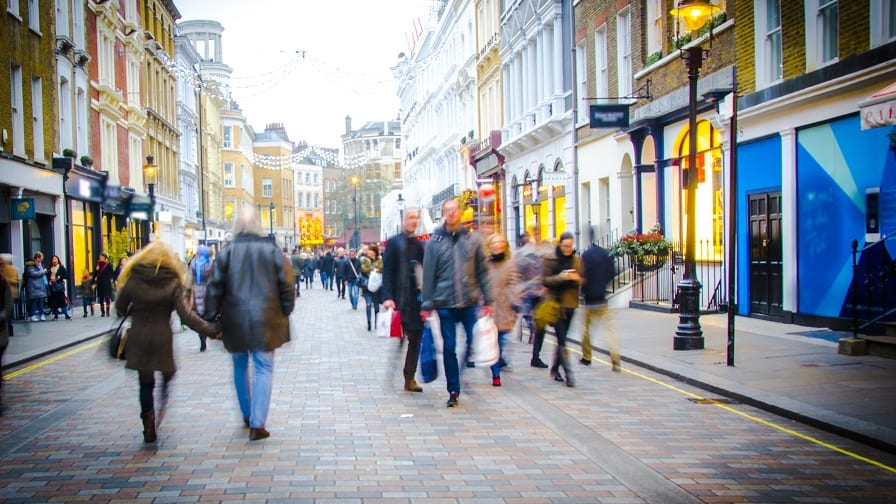Predictions declaring the death of the high street shops have long flooded the internet and at times, you wouldn’t be blamed for believing it. However, it is now time for this prophecy to say its final farewell for we are not witnessing the end of our high-street, but a transformation of its role in the buyer journey fuelled by technological developments.
Technology has not only given birth to online shopping. It has made e-commerce the most popular shopping channel, to be worth over $27 trillion by 2020. And while it can be held responsible for the decline of the high-street, it is now technology that is also responsible for its transformation. Our high-street stores are increasingly adopting tech to improve in-store experience – and more specifically, doing so in a way that mirrors how tech is being effectively used online for e-commerce.
Tracking user behaviour
We all know that the most successful e-commerce sites are tracking their visitors down to the smallest movements, helping them understand what the individual user wants, when and where – and so enabling them to lead the user down the buyer journey to conversion.
But with the use of tracking technology, high-street shops are also now better understanding their in-store visitors. Firstly, a combination of Wi-Fi hotspots, big data and cameras are being utilised to understand footfall, while websites track traffic volume. This will also allow shops to understand the in-store ‘conversion rate’, analyse the effects of recent marketing campaigns and better assign staff at given days and hours.
However, it goes even deeper than this. The likes of Topshop, Dune and Morrisons are reportedly implementing this tech to track visitors’ movements around the shop through the individual’s smartphone as it searches for Wi-Fi networks to join. This allows them to understand which parts of the store attract the highest footfall, what items are taken to the changing rooms to be tried on (and either purchase or returned) and what areas shoppers browse in, and for how long. And if shoppers don’t come back to the shop for a given period of time, there may be a major in-store improvement needed.
By analysing this data, just like online high street retailers, high-streets can better understand their visitors and in doing so, provide an improved in-store experience.
Flexible payment options
When you shop online, you are often – and usually with large brands -offered a variety of payment options. In particular, more and more e-commerce sites are catering to consumer demand and providing finance to their customers, allowing them to pay for their purchase in convenient, monthly instalments. This flexibility helps to encourage conversion at a stage when the customer is at great risk of abandoning.
For high-streets, offering flexible and immediate finance in-store seemed impossible, but with the development of technology, however, this has been transformed. Brick-and-mortar shops can now provide their customers with point-of-sale (POS) finance offering at the checkout. By simply installing onto a tablet and integrating it with an existing POS or using stand-alone material, customers can easily apply for finance whilst in the store and receive an immediate response, completely paperless.
As a result of offering such finance to their consumers, sales can be boosted, average order values increased and customer satisfaction improved.
Personalisation and timely messages
Many e-commerce websites have perfected the art of marketing automation, delivering highly personalised messages at the most relevant time to gain maximum engagement; whether through email, onsite engagement or targeted advertising.
And now high-street stores are trying to achieve the same timely, personalised messaging with the technology of geo-targeting. By using GPS to identify mobile device location, stores are delivering messages to an individual’s smartphone when they pass through or enter a set ‘boundary’. Most stores are utilising geo-targeting to identify when an individual is nearby the shop, triggering a notification to be sent to their mobile containing useful information such as the store’s location, or a discount voucher to encourage them to come into the store. So next time you pass near a store and receive a notification from them on your phone, the likelihood is it isn’t coincidence.
The only major setback to geo-targeting is that the user must have downloaded the specific store’s app on their phone. However, when it is downloaded, the retailer can gather data about the user’s demographics, behaviour and purchase history which can then be used to deliver more targeted geo-targeting and boost engagement. By 2019, the location-based services market is expected to be worth almost £30 billion as more and more retailers adopt this technology.
Technology has transformed online shopping more than most could have ever imagined a decade ago. And now it is doing the same in perhaps an even more unexpected area – brick-and-mortar shops. This is not to say that footfall and sales will instantly rocket, but technology will certainly transform how marketers as well as consumers regard our high-street shops and ensure that it retains its importance in our world of commerce.
